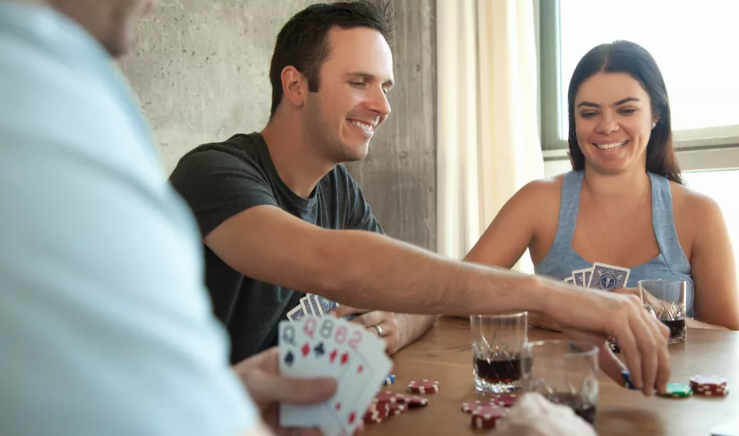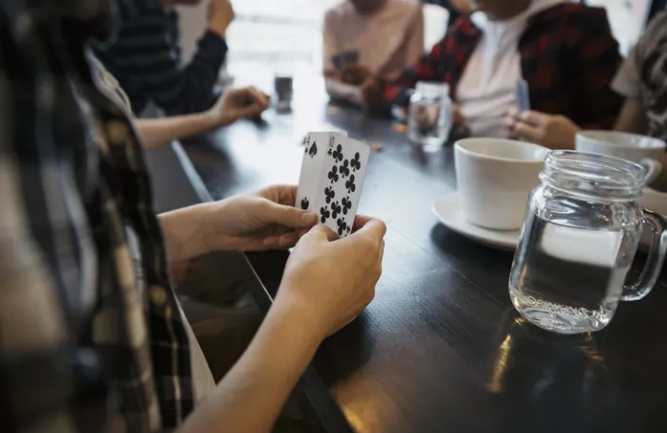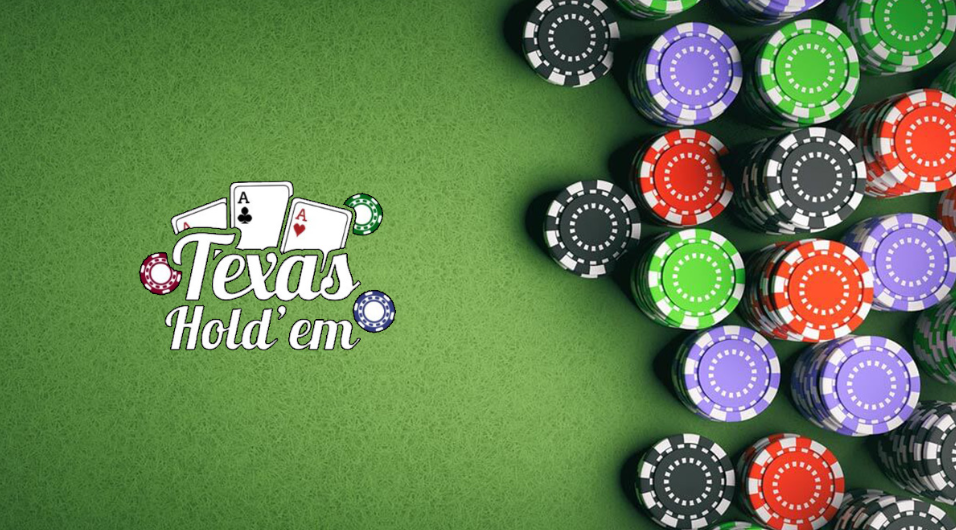Texas Hold ‘Em Poker Rules
Texas Hold ‘Em (or Texas Holdem) is the basic version of poker played in many casinos, and is the version seen on TV shows such as Travel Channel’s World Poker Tour and ESPN’s World Series of Poker.
- Here are the basic rules of Texas Hold ‘Em Poker.
- Shuffling, dealing and blinds
The dealer shuffles a standard deck of 52 cards.
In casinos, the dealer never plays. A circular puck called the dealer button moves clockwise from player to player each time a hand is dealt. The button indicates which player would be the dealer if the hand were moved from player to player during play.
Most Texas Hold ‘Em poker games begin with the two players to the left of the dealer (the button) putting a predetermined amount of money into the pot before any cards are dealt, ensuring that there is something to play for in each hand. This is called “posting blinds.” Most often, the “first blind” – the player to the left of the dealer – deposits half of the minimum bet, and the “second blind” deposits the full minimum bet.
Shuffling, dealing and blinds

The dealer shuffles a standard deck of 52 cards.
In casinos, the dealer never plays. A circular puck called the “dealer button” moves clockwise from player to player each time a hand is dealt. The button indicates which player would be the dealer if the hand were moved from player to player during play.
Most Texas Hold ‘Em poker games begin with the two players to the left of the dealer (the button) putting a predetermined amount of money into the pot before any cards are dealt, ensuring that there is something to play for in each hand. This is called “posting blinds.” Most often, the “first blind” – the player to the left of the dealer – deposits half the minimum bet, and the “second blind” deposits the full minimum bet.
Betting begins
A round of betting begins, starting with the player to the left of the two who bet the blinds. Players can call, raise or fold when it is their turn to bet.
Flop
After the first round of betting, the dealer discards the top card from the deck. This is called card burning and is done to ensure that no one accidentally sees the top card and to prevent cheating.

The dealer then turns over another three cards face down on the table. These cards are called the “flop.”
NOTE: Eventually, a total of five community cards will be laid out on the table face up. Players can use any combination of the community cards and their own two hole cards to make the best possible five-card poker hand.
After the flop, another round of betting takes place, starting with the player to the left of the dealer (button). During this and all subsequent betting rounds, players can check, call, raise or fold when it’s their turn to bet.
Fourth street
The dealer burns another card and lays another card, face up, on the table. This, the fourth community card, is called the “turn” or “Fourth Street.”
The player to the left of the dealer (button) begins the third round of betting.
Fifth Street
The dealer burns another card before placing the last face-down card on the table. This card is called the “river” or “Fifth Street.”
The final bet and the winner
Players can now use any combination of seven cards – five community cards and two hole cards known only to them – to make the best possible five-card poker hand.
